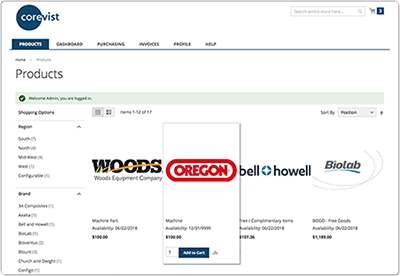Share
Author
George Anderson
Share
Meeting Buyer Needs
As Forrester predicted at the end of last year, the B2B e-commerce market has indeed passed the $1 trillion mark. In the new 2019 U.S. B2B Ecommerce Market Report, Digitalcommerce360 sets that number at $1.08 trillion. For manufacturers considering e-commerce, this report provides a crucial snapshot of the state of B2B e-commerce. The report demonstrates both progress that’s been made, and the lag that still defines many manufacturers’ online strategies (or lack thereof).
In this article, we’ll look at some key stats from the report. We’ll analyze what they mean for manufacturers, and what you can do to start syncing your customer experience with the needs of today’s digital-first buyers.
Manual transactions still dominate in B2B
In the report, Digitalcommerce360 states that 49.3% of B2B transactions are still manual (i.e. conducted through phone, fax, or email, requiring human intervention for order processing).
Let that sink in a moment. The B2B e-commerce market is worth $1 trillion, and nearly half of B2B transactions aren’t even represented in that number.
This represents a huge opportunity for manufacturers. Believe it or not, most B2B buyers would rather buy online.
Looking for B2B ecommerce?
Corevist Commerce offers ecommerce + customer dashboard,
integrated to SAP.
97% of procurement managers would rather buy online
We’ve reported elsewhere that 97% of procurement managers consider a customer portal to be a critical factor when choosing a supplier.
The disconnect couldn’t be starker.
Why do procurement managers demand e-commerce? And why aren’t manufacturers delivering it? While the answers to these questions will differ from market to market, here are some general truths:
Why do procurement managers prefer a web portal?
- They want self-service purchasing.
- They want a faster, easier ordering experience so they can get on with their busy days.
- They want accurate information (which depends on a real-time ERP integration).
What’s holding manufacturers back?
Let’s be honest, e-commerce is a new game for manufacturers. In the past, they haven’t had to think much about customer experience. For a maker of tires, it was enough to make great tires. Produce the best design, source the best materials, exercise stringent control over the manufacturing process, and maintain relationships with distributors, who would handle the customer experience part.
B2B e-commerce changes everything. In addition to R&D, manufacturing processes, regulatory compliance, and so on, manufacturers now have to consider customer experience.
At Corevist, we call this “thinking like a distributor.” It sounds complex, but really, it’s just a call for manufacturers to put themselves in the shoes of their buyers. It includes things like earning the customer’s trust in every transaction, educating the customer with product content, and providing 24x7x365 purchasing availability with e-commerce.
For more, see this post on our blog: Why Manufacturers Must Think Like Distributors.
75% of manufacturers without an e-commerce site plan to launch one soon
Digitacommerce360 reports that 60.7% of manufacturers do not yet have an e-commerce site. Even more telling, 75% of manufacturers without an e-commerce site plan to launch one in the next 2 years. With Forrester predicting $1.8 trillion in B2B e-commerce sales by 2023 (66.67% growth from today’s market value), the imperative is clear: Manufacturers must define, launch, and curate an online commerce presence or risk competitive obsolescence.
The next step: Evaluate e-commerce options
For manufacturers, the next step is to begin planning your e-commerce journey. You can start by mapping the areas which your e-commerce transformation will impact. There are 5 facets of this transformation which you should consider:
- The business case
- The customer journey
- Internal transformation at your organization
- Finding the right platform
- Deciding how you’ll measure success
For more, see this article on our blog: The 5 Critical Facets Of Your Digital Transformation Plan.
Moving forward: FREE case study
Want to see digital transformation in real life? Check out this case study on Mannington Mills. This leading manufacturer of flooring launched a Corevist Online Ordering portal for a strategic entry into e-commerce. In Phase II, Mannington added a catalog with rich content and saw 150% sales growth in the digital channel.
[want_more title=”Learn more” subtitle=”FREE Case study: 150% Sales Growth with Rich Content” description=”Learn how a leading flooring manufacturer more than doubled sales with a B2C-style catalog.” button_text=”Download Now” button_link=”https://www.corevist.com/mannington-mills/” button_class=”btn btn-primary mannington-ae” title2=”See it for yourself” subtitle2=”Talk to us” description2=”Curious what Corevist Commerce can do for you? Let us show you a personalized demo. You’ll see ecommerce with real-time SAP data.” button_text2=”Schedule Demo” button_link2=”https://www.corevist.com/demo/” button_class2=”demo-popup”]










